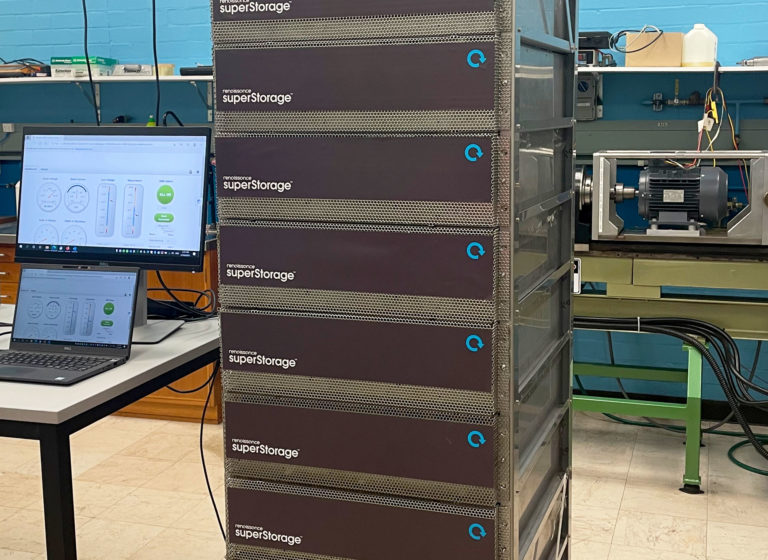Energy Renaissance announced it had received an additional AUD 525,072 ($387,081) grant from the federal government’s Advanced Manufacturing Growth Centre (AMGC) to put towards scalable processes and workforce skills at its pilot manufacturing facility in Tomago, just north of Newcastle in the state’s Hunter region.
Dubbed Renaissance One, the facility will be the flagship of Energy Renaissance, which intends to ramp up production to 5.3 GWh per annum of its trademarked lithium-ion superStorage batteries for Australia and southeast Asian markets in the coming years. The facility is slated for completion in February 2022.
Tomago, on the outskirts of Newcastle, has access to both a world-class port and a heaving skilled labour force from its long history in coal mining. Importantly, it is also home to the CSIRO’s Energy Centre research hub – a long partner of Energy Renaissance.
Energy Renaissance has previously received $246,625 from the Advanced Manufacturing Growth Centre to develop its unique hot-climate-optimised battery modules — the cell housing — that can be scaled for numerous applications from battery packs suitable for installation at the base of a streetlight, to commercial-size and grid-supporting energy storage. This new set of funding, the company said, “will allow rapid testing and the development of a scalable, manufacturing line and trained workforce that will inform the technology, systems and processes for Renaissance One.”
“AMGC has played a strategic role by supporting Energy Renaissance with a seed funding round last year that went towards the design and prototyping of our superStorage battery. The new funding injection from AMGC will now help us to scale up towards commercial production and accelerate our ability to manufacture batteries faster. This is a win for Australia, our economy and workforce as we ascend the stage to become a global battery manufacturing powerhouse,” Energy Renaissance’s Technology and Development Director, Brian Craighead, said.

In a recent report from the Future Battery Industries, the body outlined that for Australia to truly seize on the opportunity afforded by the imminent global battery boom, it needs to look beyond its historic role as a supplier of raw materials and broaden its horizons by adding value with downstream products and manufacturing. This drive to bring renewable manufacturing back onshore is catching wind, with Queensland Minister for Energy, Renewables and Hydrogen, Mick De Brenni, just this morning calling for the “re-industrialisation of our nation,” singling out the storage industry in particular.
Popular content
“Australia relies heavily on imported batteries, a reliance Energy Renaissance is committed to changing. By investing in local manufacturing, upskilling a new workforce for manufacturing and developing an innovative battery solution, Energy Renaissance will showcase how Australia can and will have a global competitive edge in battery manufacturing,” AMGC’s Managing Director, Dr Jens Goennemann said.
Energy Renaissance says its Tomago pilot project “will validate the sovereign capabilities that Australia has for the manufacturing of energy storage systems and demonstrate a stronger and more integrated Australian supply chain for key battery components and battery management systems.” The ultimate goal not only for the company but for the Australian storage industry more generally is to capture a greater share of supply-chain value-adding.
In a previous interview with pv magazine Australia, Energy Renaissance’s Managing Director, Mark Chilcote, said the fact battery manufacturing is still a burgeoning industry in Australia will make it something of an exercise in skills transfer. “Anyone currently operating a chemical plant or a gas plant could be reskilled [for Renaissance One],” Chilcote said. “There’ll be a lot of work for chemists and scientists, engineers, plenty of opportunities for graduates and interns.”
The initial production capacity of Renaissance One will be 66 MWh per annum, and the company expects to export more than half of its output through the Port of Newcastle.
This content is protected by copyright and may not be reused. If you want to cooperate with us and would like to reuse some of our content, please contact: editors@pv-magazine.com.



Thank Goodness that Australia has Finally seen “some light” and actually considering making batteries. Being the world’s Largest Exporter of Lithium Ore, it certainly took “forever” for this to come about.
The shocking part is the Tiny Amount of Money being put forth, are they Kidding ? Can they NOT see what is going on beyond their closed-minded borders ?
OZ could have Easily been the Battery Superpower in the world, it has EVERYTHING right under its own feet. The thousands of potential jobs, companies & spin-offs resulting is Huge Income Taxes (personal & commercial) and job generation to last for decades.
I would STRONGLY suggest that the “Rogue GREEN States” (Pre RE & EV) of Oz get together and damn the torpedoes and start building this sector, encourage it and forward it, to Heck with Scomo & his gang of Oilygarchs.and their sycophants.
Also, it is time to get EV Makers to come to Oz as well, Scomo did not want the Old Holden facilities converted to EV Production and pushed 3 interested potential makers away, fine, then do it at the State Level and bypass the idiot in the big chair. Step Up & Step Ahead.
This is absolutely wonderful! 🙂
Although I don’t believe they are the first company to do this in Aus, as PowerPlus Energy has been around for a few years manufacturing Australian made lithium-ion batteries.
Still great to see funding going into this industry!
I agree with Steve_S. Australia needs to take it’s place as a leader in renewables.
It will be up to people and businesses. The pollys will be too slow and other countries will take the lead. Maybe some crowd funding to get around the lack of action in Canberra?